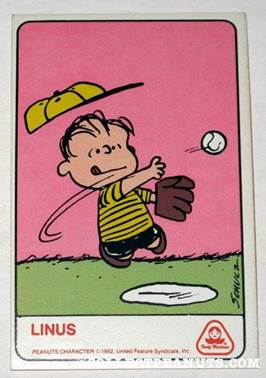
On Charlie Brown’s team, Linus is the regular second baseman and forms a double-play combo with Snoopy at shortstop. Linus often has an issue of what to do with his security blanket while batting and fielding. Another fielding issue is that he takes his position by standing on second base, somewhat limiting his range. He also pitches when Charlie Brown is unable to do so, and these are the few games that the team wins.
Who is the best second baseman of all time? It’s complicated. My first instinct was to say Joe Morgan of the Big Red Machine in Cincinnati. My grandson Ian is thinking Jackie Robinson. Let’s take a look.
Two From Long Ago: If the search for best player is determined by WAR, the top two are (i) Rogers Hornsby (not a typo – there is an ‘s’ at the end of his first name), primarily with the St. Louis Cardinals, and (ii) Eddie Collins of the White Sox and Athletics. The career WAR on Fangraphs: 130.3 for Hornsby and 120.5 for Collins. The next two are Nap Lajoie at 102.2 and Joe Morgan at 98.8. There is then a 20 point drop to the next level of players.
“The Rajah” Hornsby had a lifetime average of .358 and led the NL six years in a row from 1920 to 1925 with averages ranging from .370 to .424. His 1922 season was something special: batted .401, hit 42 homers and had 152 RBIs. He is second in career home runs for second basemen. With all due respect to DiMaggio, Mays and Aaron, he is probably the best right-handed hitter of all time and makes a strong case as the #1 second baseman. This 1919 card misspells his first name:
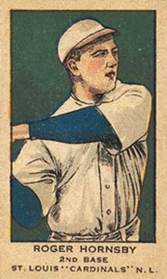
“Cocky” Collins hit over .340 in 11 different seasons in his long career, but he never won a batting title. Why? He had the misfortune of being in the AL in Ty Cobb’s era, and the Georgia Peach was even better (won 12 batting titles from 1907 to 1919). Collins is in the top 10 in baseball history in both hits and stolen bases, in each case topped by Cobb. Collins was among the players featured in the famous T206 series of baseball cards issued from 1909 to 1911, joining the likes of Ty Cobb, Walter Johnson and most notably Honus Wagner, the $2.8 million dollar man of baseball cards.
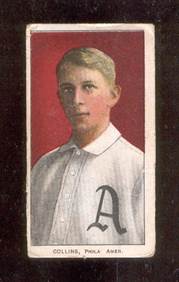
Collins continued his baseball career in management and was general manager for the Red Sox from 1933 to 1947. On the positive side, he is known for a scouting trip to California that led to the signing of two Hall of Famers, Bobby Doerr and Ted Williams. But he is also remembered for joining with owner Tom Yawkey to hold a sham tryout in 1945 for Jackie Robinson and some other black players. Public pressure had forced the tryout, but Boston had no intent to be the first team to integrate and would instead be the last (1959). Collins died in 1951 and so did not get to see his discovery Ted Williams enter the Hall of Fame in 1966, nor did he get to hear Williams’ induction speech that pushed for Hall of Fame entry for the great players from the Negro Leagues.
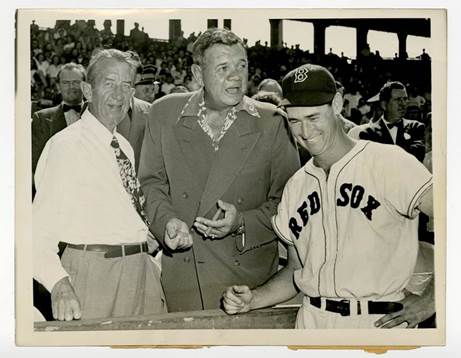
1946 – Eddie Collins, Babe Ruth and Ted Williams
My Choice from the “Modern” Era – Joe Morgan: My definition of modern starts with the players active when I was 10 years old in 1951 – the ones I have personally seen in newspaper box scores over the last 65 years. Under that test, Joe Morgan is my second baseman. His WAR number of 98.8 is substantially higher than the next level of modern players. He was a vital cog in the Big Red Machine that propelled Cincinnati to World Series championships in 1975 and 1976. Joe Posnanski, in his 2009 book The Machine, concluded that those Reds were the greatest team in baseball history: “I do not believe any other team — not the 1927 Yankees, not the “Boys of Summer” Dodgers, not the Casey Stengel Yankees, not the Oakland A’s of the early 70’s or Derek Jeter’s Yankees of the late 1990s – could match those Reds for power, speed, defense, star power, innovation, and personality.”
The “Great Eight” position players on those teams included three African Americans (Morgan, Ken Griffey, George Foster), three Latinos (Tony Perez, Dave Concepcion, Cesar Geronimo) and two whites (Pete Rose, Johnny Bench). Bench also had some Native American blood. Quite a diverse group. The same player was the Most Valuable Player in the National League in both of the seasons they won the World Series: Joe Morgan!
I should also mention that Morgan is a perfect height, 5’7”. Same as me, but he was faster and had more power. On the horizon with Joe Morgan tools: 5’5” Jose Altuve of the Astros. He is so much fun to watch, especially when not playing against the Royals.
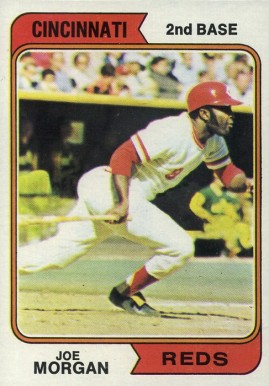
Ian’s Choice – Jackie Robinson: I love this choice. My 10-year old grandson knows and appreciates the player who did not have the best stats, but who is arguably the most important baseball player ever. Jackie was not even a star when he was recruited from the Kansas City Monarchs by Branch Rickey. But as perfectly summarized by Buck O’Neil, “Jackie wasn’t the best player in the Negro Leagues; he was the right player.” This fact has just been beautifully retold in Ken Burns’ powerful 4-hour documentary on public television.
Jackie is not in the top tier of career WAR rankings, but that stat greatly rewards players with longevity. As a result of baseball segregation, Jackie did not reach the major leagues until he was 28 (because of people like Eddie Collins as noted above). But even in that short time, he created a legacy. The Major Leagues did not have a Rookie of the Year award until 1947, and the award was not split to name one each for the AL and NL (that started in 1949). Jackie Robinson won the inaugural award. In 1949, he led the league in hitting and was MVP. He was one of the “Boys of Summer” as the Dodgers won 6 pennants in the 10 years he played for them (1947-1956). And he took more heat than any player in history – as Martin Luther King said, Robinson was “a freedom rider before freedom rides.”
[Trivia bonus: Jackie played for two different Royals teams between his time with the Kansas City Monarchs and his first season with the Dodgers. It is well known that Jackie played his 1946 season with the Montreal Royals, the Dodgers top farm team. But he also played for the “Kansas City Royals” in the California Winter League made up of barnstorming teams such as the Kansas City Royals (mostly KC Monarchs players) and Bob Feller’s All Stars. An integrated league. The photo below shows Jackie as a Kansas City Royal]
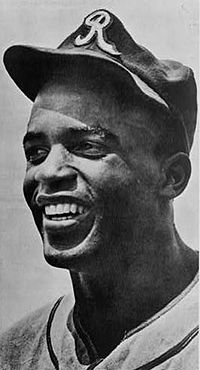
Trivia Extravaganza: Baseball lends itself so well to trivia, and this past week has been very good to the nerds in the Hot Stove world.
Bryce Harper: Harper visited the Negro Leagues Baseball Museum on Tuesday a week ago, hit a homer at the K on Wednesday and then headed to Chicago for a series against the Cubs. While at Wrigley, he turned into a walking (pun intended) trivia machine. In the four games, he had only four official at-bats to go with 13 walks (a record for a 4-game series), a sacrifice fly and one hit-batsman. The most notable stat was in the Sunday game that went into extra innings. Harper went to the plate seven times – he was hit once and walked six times, so none of his seven plate appearances counted as an official “at-bat” – a new major league game record. How did all those intentional and almost-intentional walks work out for the Cubs? Not bad. They swept the 4-game series.
Harper may not have been in a great mood when the Nationals got back to DC for a series with Detroit. On Monday night, he was ejected for arguing an umpire’s strike call – on another player. Harper was in the dugout and one of several Nationals giving the plate umpire a hard time. After the game, Harper was back on the field to celebrate the Nationals walk-off victory and had some choice words for the umpire, all captured on film. Yes, you can tell he is saying that bad word (although some online clips now cover Harper’s mouth so you can’t read his lips, others remain). Harper was suspended for this outburst and would not have played Wednesday night but for an appeal that placed the suspension on hold. So, he was in the game last night and saw a pitching masterpiece by his teammate…
Max Scherzer: Max struck out 20 Tigers, tying the major league record. About 15 minutes after the game, I checked Wikipedia to see who else had done this, and Wiki already had the Scherzer entry. He joined a pretty exclusive club: Roger Clemens (twice), Kerry Wood and Randy Johnson. MU fans will likely remember Scherzer as the Pitcher of the Year in the Big 12 in pre-SEC 2005. The Big 12 Player of the Year in 2005 was Nebraska’s Alex Gordon. Click here for the 20 strikeouts in 35 seconds.
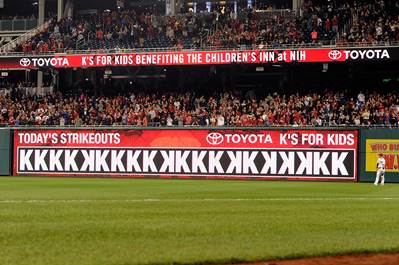
Bartolo Colon: The Mets pitcher has given us what may turn out to be the most enjoyable at-bat this season. Now in his 19th season, Colon hit his first career home run last Saturday. His record: the oldest to ever hit his first home run (he will be 43 on May 24). Then, the second most enjoyable moment came. His home run trot. It took him 31 seconds to get around the bases, a little longer than Kirk Gibson’s limping trot after his pinch-hit walk-off homer in Game 1 of the 1988 World Series. One big difference is that Gibson had injured both legs in the NLCS and was not even expected to play. There are some fun short videos on this link for the Colon homer, including one in Spanish and one comparing the home run trot to the last quarter-mile in Nyquist’s victory in Saturday’s Kentucky Derby.
[Franchise Trivia: As discussed in the prior two Hot Stove posts, the Nationals were originally the Montreal Expos who moved to DC in 2005. The only former Montreal player who is currently on a major league roster is Bartolo Colon. He played half a season for them in 2002 and had a 10-4 record. He started that season with Cleveland where he was also 10-4, giving him a full season record of 20-8).]
[Heavy Trivia: Colon is 5’11” and weighs 265 pounds, a BMI of 37. But Rangers 1B/DH Prince Fielder is in first place on BMI: same height, 275 pounds, 38.4 BMI.]
Stephen Curry: Pardon the switch of sports, but Steph cannot be denied. On a scale of 1 to 10, he has been playing at 12 this season (yes, that’s even better than the 11 on the Spinal Tap guitar amp). On Monday, after missing three games because of an injury, he came off the bench to score 23 points in regulation to get the Warriors into overtime against the Portland Trailblazers. He then scored 17 points in the 5-minute overtime – a playoff record. Click here. This week, he was named the MVP for the 2015-16 NBA season. First time ever that this vote has been unanimous (all 131 votes). Last night, the Warriors eliminated Portland and will face either the Spurs or the Thunder in the West finals.
Posnanski Chronicles: As I write these Hot Stove posts and realize how much time they take, my admiration just keeps growing for day-to-day sportswriters on deadline. My favorite example is Joe Posnanski who just this week has covered in entertaining detail all four of the above trivia items. Here are his takes on Harper and intentional walks (he hates them); Scherzer; Curry as MVP; and Colon (one more gem from this post – knuckleballer Hoyt Wilhelm started his 20-year career in 1952, and in his first major league at-bat hit a homer. He never hit another one. So, he and Colon are tied at one each).
St. Louis Report: I don’t really follow hockey, but I am rooting for the St. Louis Blues who after last night’s Game 7 win are in the final four of the NHL playoffs. Missouri Senator Claire McCaskill sent out a congratulatory tweet to the Blues after the game and then added “Take that Kroenke.” She is referring to NFL owner Stan Kroenke who moved his Rams from St. Louis to LA for next season. To add insult to injury, the now-LA Rams posted ads during the Cardinals game with the Angels in LA this week – see the “RamsFanShop.Com” ad in this screenshot with the St. Louis pitcher on the mound.
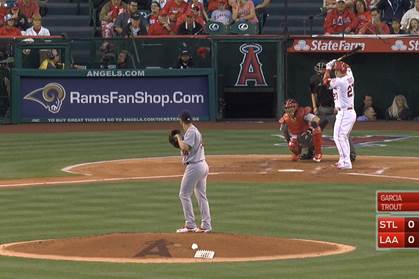
Linus Revisited: Since I started with a second baseman named Linus, I thought it would be good to finish the same way. Linus Reinhard Frey was in the majors for 14 years, and his best years were as a second baseman with Cincinnati – pennant winners in 1939 and 1940, and a World Series win in 1940. During MLB’s centennial celebration in 1969, teams named their all-time players, and Frey was the Reds’ choice at 2nd base. He would not be so honored today – Joe Morgan arrived in 1972 for the first of his eight consecutive all-star seasons in Cincinnati.
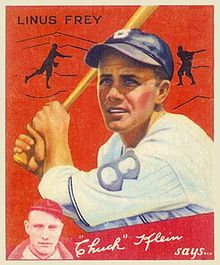
Although this baseball card for Frey uses his given first name of Linus, he was generally known by his nickname: Lonny. Seriously, click here.
Go Blues!
Go Steph!
Go Royals!